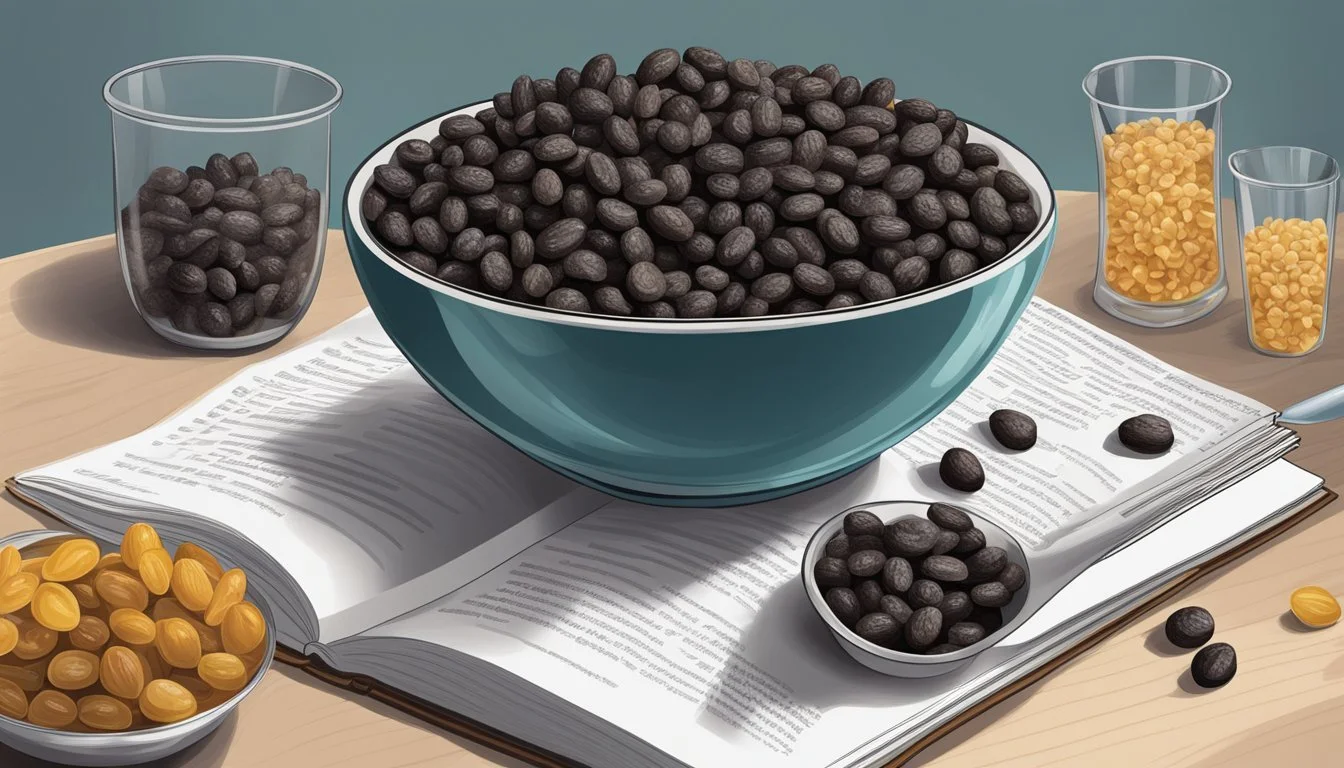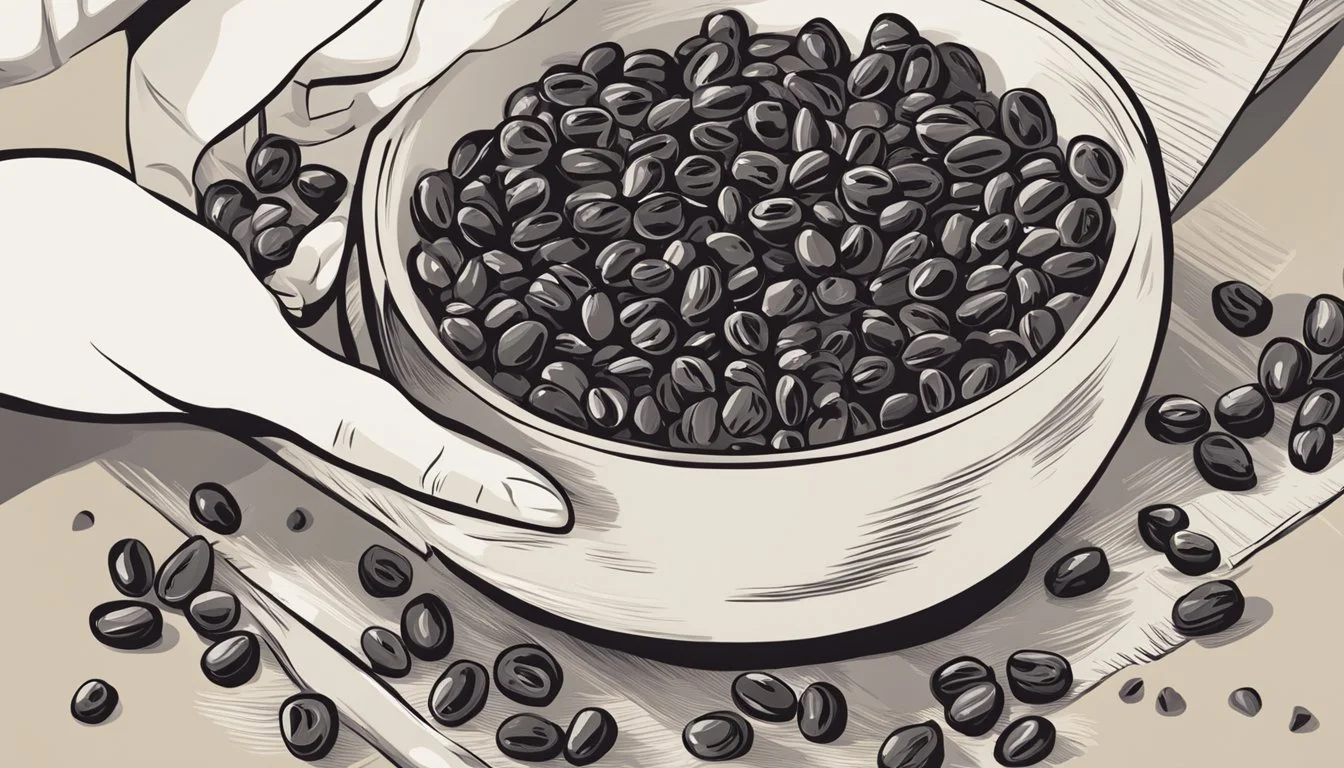How to Substitute Sultanas for Raisins
A Simple Guide for Baking and Cooking
Sultanas and raisins are versatile ingredients commonly used in a variety of dishes. Understanding how to substitute one for the other can be a noteworthy skill in cooking and baking, particularly when a recipe calls for sultanas, which may not be as readily available in certain regions as raisins. Although sultanas are typically lighter in color and slightly sweeter than raisins, their texture and size are comparable, which makes them excellent substitutes for each other.
When replacing sultanas with raisins in a recipe, it is essential to consider their differences in sweetness and moisture content. Sultanas, for instance, absorb liquid more readily due to their oil-coated drying process, so they can add a different texture to dishes if not managed correctly. To achieve the best culinary results, they should be used in equal amounts. The substitution should align with the desired flavor profile and texture of the recipe, whether it is for baking or cooking.
Understanding Raisins and Sultanas
Exploring the world of dried fruit, one finds that raisins and sultanas are staples in many pantries. They're integral to a variety of dishes, and understanding their distinct characteristics is key to substituting them effectively.
Defining Raisins and Sultanas
Raisins are dried grapes that come from several grape varieties. Sultanas, specifically, are made from the Thompson Seedless grape variety. The drying process of raisins usually involves natural sun drying, while sultanas may often be treated with sulfur dioxide to preserve their lighter color and dried more quickly.
Cultural and Regional Varieties
In the UK and Australian markets, the term "sultana" is commonly used for these golden dried fruits (What wine goes well with dried fruits?), whereas "raisins" refer to the darker and slightly larger variety, which may include types like the Black Corinth or Zante currant. In contrast, the American terminology often categorizes sultanas as a type of raisin, typically golden raisins.
Nutritional Profiles
Raisins and sultanas are rich sources of antioxidants, vitamins, minerals, and fiber. They contain notable amounts of potassium and iron. The health benefits associated with these dried fruits include potential reductions in risk for heart disease and diabetes, thanks to their polyphenols that help manage inflammation and blood sugar control.
Taste and Texture Characteristics
Sultanas are known for their natural sweetness and chewy texture, with a generally sweeter taste and a more golden color compared to regular raisins. Raisins, on the other hand, offer a more intense sweet-tart flavor and are tangier and chewier than sultanas.
Usage in Recipes
Both raisins and sultanas can be used interchangeably in baking, from fruitcakes and muffins to breads. They can add a sweet and tangy flavor to oatmeal, granola, salads, and savory dishes. When considering a substitution, it's important to account for the minor taste and texture differences which could affect the final result of recipes like oatmeal raisin cookies.
Availability and Common Substitutions
These dried fruits are readily available at most grocery stores. When sultanas are not at hand, suitable substitutes include dried currants, golden raisins, dried cranberries, dried cherries, dates, apricots, or figs. Each substitute brings its unique flavor profile and texture to a dish.
Preservation and Shelf Life
The shelf life of both raisins and sultanas is significantly long when stored properly. Keep them in a cool, dry place, preferably in airtight containers. The drying process and use of sulfur dioxide in sultanas both play roles in their preservation, often extending their shelf life compared to untreated raisins.
Substituting Sultanas for Raisins
When it comes to baking and cooking, sultanas can be a valuable substitute for raisins, offering a similar texture and a slightly sweeter taste. This section assists the reader in making informed substitutions in various recipes.
When to Substitute
Substituting sultanas for raisins is suitable in baking applications like cookies, cakes, and pies, as well as in puddings, salads, stews, tagines, curries, and granola bars. They bring a complementary sweetness to both sweet and savory dishes, which is welcomed in many recipes.
How to Choose the Right Substitute
Select seedless sultanas that are similar in size to the raisins called for in the recipe to ensure a balanced distribution within the dish. Check for the following characteristics for a successful substitute:
Sweetness: Sultanas tend to be sweeter due to their natural sugars.
Flavor: Sultanas offer a milder taste compared to the tart and tangy profile of some raisins.
Size and Texture: Look for sultanas with a chewy texture that matches the expected bite of raisins.
Adjusting for Taste and Sweetness
Since sultanas are sweeter and milder in flavor than some raisins, adjust the amount of sugar in the recipe if necessary. For dishes that require a less dominant sweet flavor, consider reducing the added sweeteners slightly to compensate for the natural sweetness of sultanas.
Adapting to Texture Differences
While sultanas and raisins are similar, sultanas are generally softer and more plump. This can be a desirable trait, especially in moist bakes like puddings and cakes. For dishes where a firmer texture is needed, one may need to reduce the moisture content in the recipe or bake for a slightly longer period to achieve a desired consistency.
Practical Baking Tips with Sultanas
When using sultanas in baking, it is important to integrate them properly into doughs and batters, enhance their flavor through soaking, and understand their use in no-bake recipes and storage requirements for the best results.
Incorporating Sultanas into Doughs and Batters
When adding sultanas to doughs and batters, whether for fruitcakes, muffins, or breads, even distribution is key to ensure each bite contains fruit. To prevent sultanas from sinking to the bottom, a baker may lightly dust them with flour before folding them into the mixture. This technique allows the sultanas to grip onto the dough and remain suspended throughout the bake.
Soaking Sultanas for Enhanced Flavor
Soaking sultanas prior to baking can significantly boost the flavor and moisture of the dried fruit. Submerge the sultanas in a liquid, such as water, juice, or for a more adult kick, alcohol like brandy or rum.
Soaking duration: 30 minutes for a basic soak, or longer to intensify the flavor.
Ratio: Enough liquid to cover the sultanas.
Post-soak: Drain well to prevent altering the consistency of your recipe.
Sultanas in No-Bake Recipes
Sultanas offer a chewy sweetness to no-bake recipes such as trail mixes, granola, or chutneys. Since there's no oven time to soften them, consider presoaking sultanas to ensure they are tender for these types of dishes. The plumper fruit will add a pleasant texture and can be a bright contrast to the nuts and seeds often found in no-bake preparations.
Storage Advice for Prepared Foods with Sultanas
The shelf life of prepared foods containing sultanas, like most baked goods, can be prolonged by proper storage. Store them in airtight containers to maintain freshness and prevent the sultanas from drying out. Keep at room temperature for short-term storage or freeze for extended freshness, ensuring fruitcakes and similar items remain delicious well beyond their bake date.
Health Considerations and Dietary Importance
When substituting sultanas for raisins, one should consider not only the culinary impact but also the differences in their nutritional profiles and effects on health. These factors include their potential effect on allergies and sensitivities, their glycemic index and sugar content, and the dietary fiber they provide along with the overall benefits for digestive and general health.
Allergies and Sensitivities
People with fruit allergies or sensitivities should be cautious as both sultanas and raisins may trigger allergic reactions. It's important to identify any pre-existing conditions before incorporating them into the diet. In addition, processed sultanas are sometimes preserved with sulfur dioxide, which can cause reactions in individuals with sulfite sensitivity.
Glycemic Index and Sugar Content
The glycemic index (GI) of sultanas may differ slightly from raisins due to their sugar content and moisture levels. Raisins generally have a medium GI while sultanas can have a marginally lower GI. Individuals with diabetes or concerns about blood sugar control should be mindful of portion sizes and the timing of consumption when eating sultanas.
Dietary Fiber and Digestive Benefits
Sultanas contribute to digestive health as they are a source of dietary fiber. Soluble fiber, prevalent in sultanas, assists in digestion and can help prevent gastrointestinal issues. The fiber also aids in regulating blood sugar levels and improving insulin sensitivity, which is critical for individuals with diabetes or those monitoring blood glucose.
Incorporating Sultanas for Nutritional Balance
Sultanas are rich in various nutrients, including minerals like potassium, which supports heart health, as well as small amounts of calcium for bone strength. They also contain antioxidants such as polyphenols, which may contribute to improved health. When incorporating sultanas as a substitution for raisins, one can maintain a nutritional balance by considering their vitamins and mineral contribution to dietary intake.






